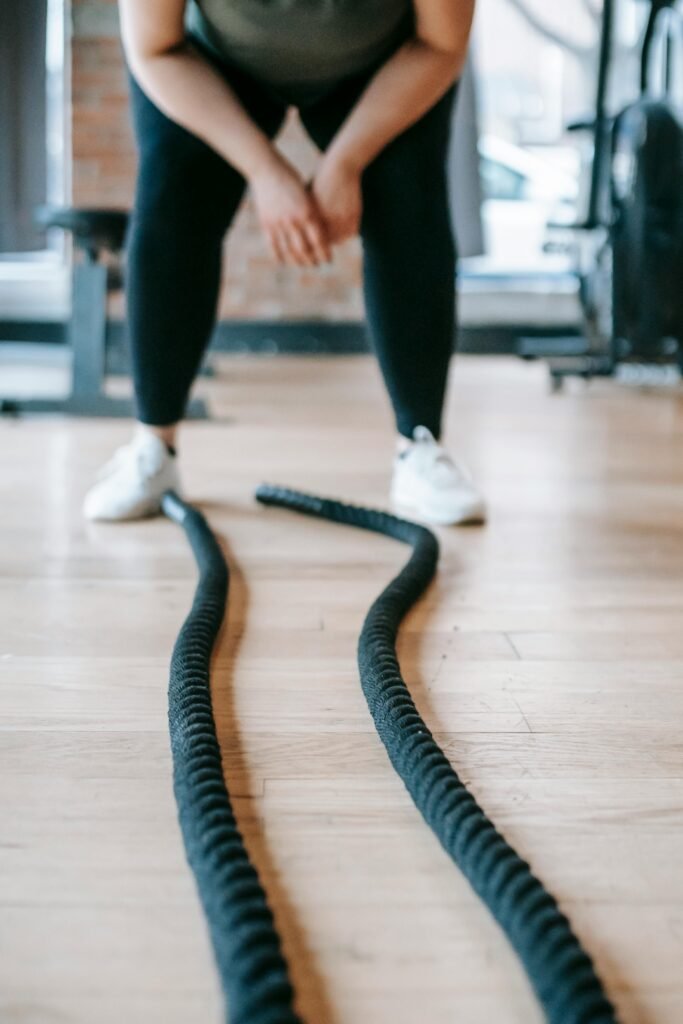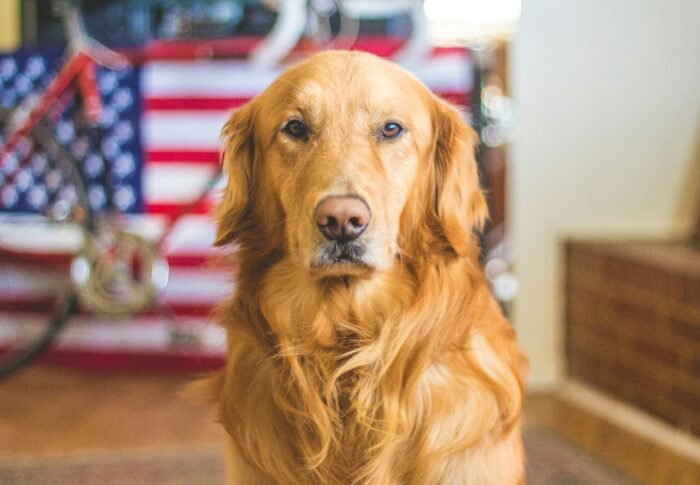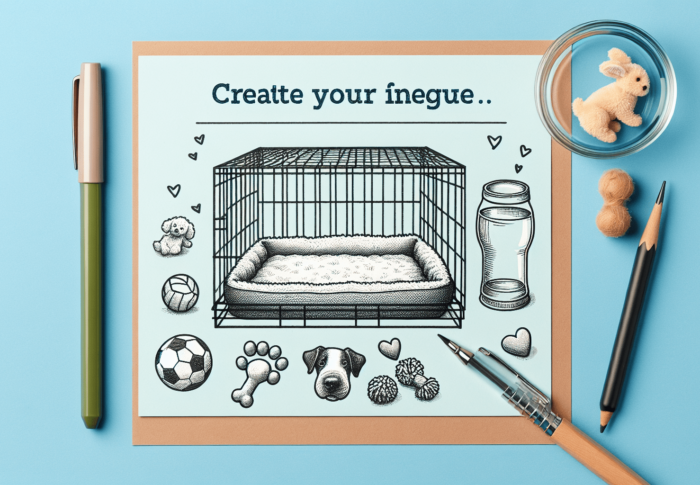
Proven Strategies: Combating Separation Anxiety Through Crating
You’ve heard of separation anxiety in dogs, but did you know that crating can be an effective strategy to combat it? In this article, we will explore the proven techniques and strategies to help alleviate separation anxiety in your furry friend through the use of a crate. Whether you’re a new pet owner or have been struggling with this issue for some time, these tried and tested methods will guide you towards a happier, more relaxed dog when you’re away. Say goodbye to those anxious doggy behaviors and say hello to a calmer and more contented pup with the power of crating.
Find products like these on Amazon!
Understanding Separation Anxiety
Separation anxiety is a common behavioral issue that many dogs experience when they are separated from their owners. It can result in excessive anxiety and distress for both the dog and the owner. By understanding the symptoms, causes, and effects of separation anxiety, you can better address this issue and provide your furry friend with the help they need.
Symptoms of separation anxiety
It’s important to be able to recognize the symptoms of separation anxiety in dogs. Some common signs include excessive barking or howling, destructive behavior such as chewing or digging, inappropriate elimination, pacing or restlessness, and even attempts to escape. These behaviors often occur when the dog is left alone or anticipates being left alone.
Causes of separation anxiety
Separation anxiety can have various causes. It may develop as a result of a traumatic event, such as being abandoned or experiencing a change in environment. Some dogs may have a predisposition to anxiety due to their genetic makeup or early life experiences. Additionally, dogs that have had inconsistent or negative experiences with being left alone may be more prone to developing separation anxiety.
Effects of separation anxiety on dogs
Separation anxiety can have significant effects on a dog’s overall well-being. It can lead to increased stress levels, which may result in physical symptoms such as gastrointestinal issues, loss of appetite, or weight loss. Dogs with separation anxiety may also become overly attached to their owners, making it difficult for them to cope with being alone. This can negatively impact their socialization skills and overall quality of life.
Introduction to Crating
Crate training is a valuable tool that can help manage separation anxiety in dogs. When done correctly, it provides a safe and secure space for your furry friend, making them feel more comfortable and relaxed when alone. Let’s take a closer look at what crate training entails and the benefits it can offer.
What is crate training?
Crate training involves introducing your dog to a crate or a small, enclosed space that acts as their own personal den. The crate should be appropriately sized to allow your dog to stand up, turn around, and lie down comfortably. It should also be well-ventilated and have a comfortable bedding or mat inside. The idea behind crate training is to create a positive association with the crate, making it a place where your dog feels safe and secure.
Benefits of crate training
Crate training offers numerous benefits, especially when it comes to managing separation anxiety. Firstly, it provides a sense of security for your dog, as they have their own space where they can retreat to when feeling anxious or overwhelmed. Additionally, crate training can help prevent destructive behavior that often occurs when a dog is left alone. By confining them to the crate, you can minimize the risk of them damaging your furniture or belongings. Lastly, crate training can aid in potty training, as most dogs naturally avoid soiling their living area.
Choosing the right crate size
When selecting a crate for your dog, it’s essential to pick the appropriate size. If the crate is too small, your dog may feel cramped and uncomfortable. On the other hand, if the crate is too large, it may not provide the secure feeling that a well-fitted crate does. To determine the right size, measure your dog from the tip of their nose to the base of their tail and from the top of their head to the ground. Add a few inches to these measurements to ensure your dog has enough room to move and stretch comfortably.

This image is property of images.pexels.com.
Find products like these on Amazon!
Creating a Positive Association with the Crate
To effectively use a crate for managing separation anxiety, it’s crucial to create a positive association with the crate. This will help your dog view the crate as a safe and enjoyable space rather than a place of punishment or confinement. Here are some steps you can take to achieve this:
Introducing the crate gradually
Introduce your dog to the crate gradually to avoid overwhelming them. Start by placing the crate in a common area of the house, such as the living room, and keep the door open. Allow your dog to explore the crate at their own pace, and reward them with treats or praise for showing interest. Make it a positive and stress-free experience by associating the crate with pleasant things, such as their favorite toys or a cozy blanket.
Making the crate a comfortable space
To encourage your dog to view the crate as a comfortable space, make sure it is equipped with cozy bedding or a soft mat. Add some of your dog’s familiar items, such as a shirt with your scent or their favorite toy, to make the crate feel more comforting and secure. Keep the crate in an area where your dog can still be part of the family, even when they are in the crate. This will help them feel less isolated and more included.
Using positive reinforcement
Positive reinforcement is a powerful tool in crate training. Whenever your dog voluntarily enters the crate or shows signs of comfort inside, reward them with treats or verbal praise. This will reinforce the idea that the crate is a positive and rewarding place to be. Avoid using the crate as a form of punishment, as this can create negative associations and make your dog resistant to using it willingly.
Step-by-Step Crate Training Process
Now that you understand the importance of creating a positive association with the crate, let’s dive into the step-by-step process of crate training. By following these guidelines, you can gradually acclimate your dog to the crate and help them feel more at ease when left alone.
Creating a structured routine
Establishing a structured routine is key to successful crate training. Set specific times for feeding, exercise, and crate sessions. Dogs thrive on routine and predictability, so sticking to a consistent schedule will help them feel secure and reduce anxiety. Incorporate short training sessions throughout the day to reinforce positive behaviors and gradually introduce your dog to the crate.
Introducing short crate sessions
Begin by enticing your dog to enter the crate using treats or toys. Encourage them to explore the crate by placing treats near the entrance or inside. As your dog becomes more comfortable, start closing the door for short periods while you remain nearby. Gradually increase the duration of these closed-door sessions, always rewarding your dog for calm and relaxed behavior. If your dog shows signs of distress or anxiety, take a step back and progress more slowly.
Gradually increasing crate time
As your dog becomes more accustomed to being in the crate, start increasing the duration of their time spent inside. Begin with short intervals, such as a few minutes, and gradually extend the time as your dog becomes more comfortable and relaxed. Remember to offer rewards and praise for calm behavior during and after each crate session. Eventually, your dog will be able to stay in the crate for more extended periods, mimicking the time they would typically be alone.

This image is property of images.pexels.com.
Using Crate Training for Separation Anxiety
Now that your dog is familiar with and comfortable in the crate, you can start using it as a management tool for their separation anxiety. Here’s how crate training can help alleviate anxiety and prevent destructive behavior:
Using the crate as a management tool
When you need to leave your dog alone, confining them to the crate can prevent them from engaging in destructive behaviors or becoming excessively anxious. The crate provides a safe and secure space where your dog can relax in your absence, reducing the likelihood of destructive tendencies. However, it’s important to remember that the crate should never be used as a long-term solution or a replacement for proper training and stimulation.
Alleviating anxiety through crate training
Crate training can help alleviate separation anxiety by providing a predictable and familiar environment for your dog. The crate becomes their designated safe space, where they can feel secure even when you are not around. The routine and structure of crate training can also help reduce anxiety by providing a sense of stability and control. Over time, your dog may start to associate the crate with positive experiences and view it as a comforting retreat.
Preventing destructive behavior
One of the primary benefits of crate training for separation anxiety is preventing destructive behavior. When left alone, dogs with separation anxiety may resort to chewing furniture, scratching doors, or eliminating indoors. By confining them to a crate, you can limit their access to household items and reduce the risk of damage. Ensure the crate is stocked with engaging toys or puzzle feeders to provide mental stimulation and distract them from anxiety-triggered destructive behaviors.
Additional Strategies to Combat Separation Anxiety
While crate training can be an effective tool in managing separation anxiety, it’s often beneficial to combine it with other strategies. Here are a few additional approaches that can help alleviate separation anxiety in dogs:
Gradual departures and returns
Practice gradually increasing the duration of your departures and returns to help desensitize your dog to your absence. Start by leaving for a few seconds and gradually work your way up to several minutes or longer. Similarly, when returning home, avoid making a big fuss and instead wait for your dog to calm down before giving attention. This will help teach your dog that departures and returns are normal and nothing to be anxious about.
Implementing mental stimulation
Engage your dog’s mind with mental stimulation activities, such as puzzle toys or treat-dispensing toys. These interactive toys provide a mental challenge and can help distract your dog from their anxiety. Incorporating these activities throughout the day, especially before crate sessions or departures, can help tire your dog mentally and reduce their anxiety levels.
Exercise and physical activity
Regular exercise and physical activity are crucial for managing separation anxiety. Before leaving your dog alone, make sure they have had ample exercise to burn off excess energy. A tired dog is more likely to relax and rest in the crate, reducing the likelihood of anxious behaviors. Consider incorporating daily walks, playtime, or interactive games to provide your dog with the physical outlet they need.

This image is property of images.pexels.com.
Avoiding Common Mistakes
While crate training can be highly effective, it’s important to avoid some common mistakes that could hinder progress or exacerbate separation anxiety. By steering clear of these pitfalls, you can ensure a smoother and more successful training journey for your furry friend.
Don’t use the crate for punishment
The crate should never be used as a form of punishment. Associating the crate with negative experiences can make your dog fearful or resistant to using it willingly. Instead, focus on creating positive associations and make the crate a place your dog voluntarily seeks out for comfort and relaxation.
Not leaving the dog crated for excessive hours
While the crate can provide a safe and secure space for your dog, it should not be a place where they spend excessive amounts of time. Dogs thrive on social interaction and mental stimulation, so confining them to a crate for too many hours a day can lead to frustration, boredom, and an increase in separation anxiety. Aim to gradually increase crate time, but also ensure your dog has ample opportunities for exercise, socialization, and companionship.
Avoiding rushed crate training
Patience is key when crate training, especially when dealing with separation anxiety. Rushing the process can lead to setbacks and stress for both you and your dog. Take the time to properly introduce the crate, gradually increase crate time, and reinforce positive behavior. Remember, every dog is different, and progress will vary. Stay consistent and be patient, and you will see positive results over time.
Seeking Professional Help
If your dog’s separation anxiety continues to be a challenge despite your best efforts, seeking professional help is highly recommended. Veterinarians and professional trainers experienced in behavior modification can provide valuable guidance and support. They can assess your dog’s specific needs, offer tailored training approaches, and help you develop a comprehensive plan to address separation anxiety effectively.
Consulting with a veterinarian or trainer
Your dog’s veterinarian should be your first point of contact if you suspect separation anxiety. They can rule out any underlying medical conditions that may be contributing to the anxiety and provide recommendations based on the severity of the anxiety. Additionally, trainers who specialize in separation anxiety can provide valuable insights and techniques to address the issue.
Considering medications for severe cases
In severe cases of separation anxiety, medication may be recommended to help manage the symptoms. Your veterinarian may prescribe anti-anxiety medications or suggest natural remedies that can help reduce your dog’s anxiety levels. Medication should always be used in conjunction with behavior modification techniques and under the guidance of a veterinarian.
Working with a separation anxiety specialist
For complex cases, working with a separation anxiety specialist can make a significant difference. These professionals specialize in helping dogs overcome separation anxiety and can provide tailored and comprehensive behavior modification plans. They can assess your dog’s specific needs, guide you through the training process, and offer ongoing support to ensure long-term success.
Patience and Persistence
When it comes to managing separation anxiety, patience and persistence are crucial. Addressing separation anxiety is a journey that takes time and effort. Understand that progress may be gradual, and setbacks may occur along the way. Consistency in training methods, ongoing reinforcement of positive behaviors, and celebrating small victories will help you and your dog navigate this challenging but ultimately rewarding process.
Understanding that progress takes time
It’s important to be patient and understand that progress in managing separation anxiety can take time. Every dog is different, and what works for one may not work for another. Some dogs may respond quickly to crate training, while others may require more time and reinforcement. Be prepared for setbacks and remain committed to working through them. With time, consistency, and love, you can help your dog overcome their separation anxiety.
Consistency in training methods
Consistency is key when training a dog with separation anxiety. Stick to the routine and structured training plan you have established. Consistent reinforcement of positive behavior, regular exercise and mental stimulation, and ongoing crate training will reinforce the desired behaviors and help your dog feel more comfortable in their crate when alone. Avoid changing training techniques too frequently or deviating from the established routine, as this can lead to confusion and hinder progress.
Celebrating small victories
Even the smallest steps toward overcoming separation anxiety should be celebrated. Acknowledge and reward your dog for calm behavior in the crate, relaxed behavior during departures, or improved coping mechanisms when left alone. Pat yourself on the back for your dedication and commitment to helping your furry friend. Celebrating small victories will not only motivate you to continue but also boost your dog’s confidence and reinforce positive associations with crate training.
Conclusion
Crating can be a valuable tool in managing separation anxiety in dogs. By introducing your dog to the crate gradually, creating a positive association with it, and following a step-by-step training process, you can help alleviate anxiety and prevent destructive behaviors. Remember to combine crate training with other strategies, such as gradual departures and mental stimulation, for a well-rounded approach. Avoid common mistakes, seek professional help when needed, and above all, be patient and persistent. With crate training and your unwavering love and support, you can provide your dog with a sense of security and comfort and improve their overall well-being.
Find products like these on Amazon!
- Understanding Separation Anxiety
- Introduction to Crating
- Creating a Positive Association with the Crate
- Step-by-Step Crate Training Process
- Using Crate Training for Separation Anxiety
- Additional Strategies to Combat Separation Anxiety
- Avoiding Common Mistakes
- Seeking Professional Help
- Patience and Persistence
- Conclusion







-
-
12 hours
Tagged Dog care, Separation anxiety, tips and tricks